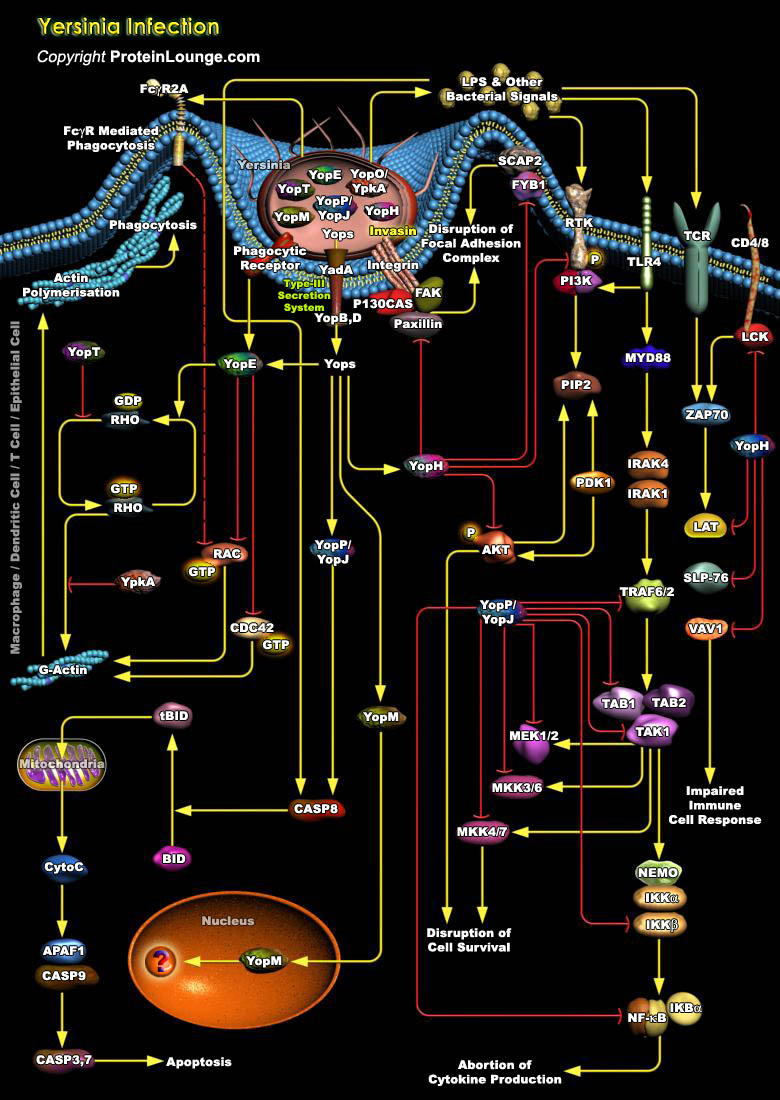
Yersinia pestis, is a facultative intracellular a gram-negative bacillus responsible for causing bubonic plague (Ref.1). Apart from Y. pestis, two other pathogenic Yersinia species, Yersinia enterocolitica, Y. pseudotuberculosis, are known to infect human and animal hosts and cause a variety of intestinal and septicemic diseases. All three species harbor a virulence plasmid, which encodes a type III secretion system (T3SS) for secreting Yop(Yersinia outer membrane proteins) protein substrates, to establish a successful infection (Ref.1). While Y. pestis is responsible for the outbreak of plague, infections with Y. enterocolitica and Y. pseudotuberculosis generally cause gastroenteritis and lymphadenitis (Ref.2). Infection is most often[..]
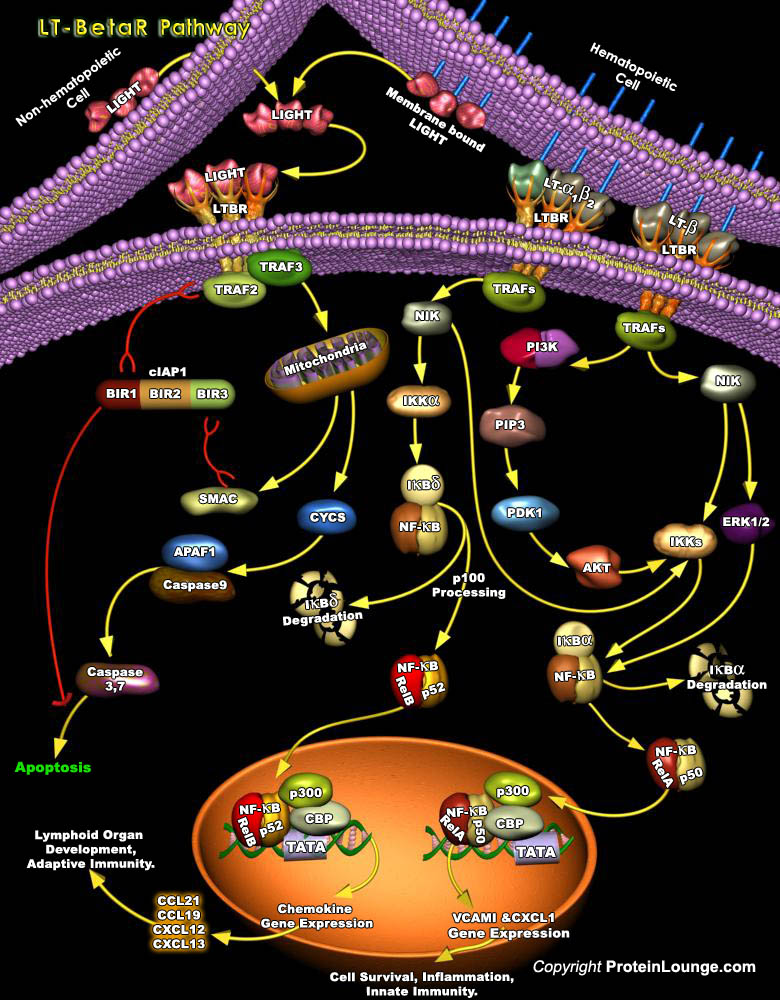
Much of the efficiency of the immune system is attributed to the high degree of spatial and temporal organization in the secondary lymphoid organs. Signaling through the LT-BetaR (Lymphotoxin-Beta Receptor) pathway is a crucial element in the maintenance of this organised microenvironment (Ref.1). LT-BetaR, a member of the TNFR (Tumor Necrosis Factor Receptor) superfamily, plays important roles in embryonic development and organization of secondary lymphoid tissues and maintenance of their architecture in adults (Ref. 2). LT-BetaR is expressed on most cell types including cells of fibroblast, epithelial, and myeloid lineages but not on T or B lymphocytes. It can bind to specific ligands, such as: the membrane form of lymphotoxin heterotrimmer, LT-Alpha1Beta2[..]

BTG2 (BTG Family Member-2) is endowed with antiproliferative activity. The expression of BTG2 in cycling cells induces accumulation of hypophosphorylated, growth-inhibitory forms of Rb (Retinoblastoma) and led to G1 arrest through impairment of DNA synthesis. Overexpression of CcnD1 (Cyclin-D1) counteracts G1 arrest. Rb is a nuclear phosphoprotein whose phosphorylation state oscillates regularly during the cell cycle. Its under-phosphorylated forms predominate in G0 and G1, while highly phosphorylated forms exist in S, G2 and M phases (Ref.1). The primary biological function of under-phosphorylated Rb is to inhibit progression toward S phase by controlling a checkpoint in late G1. In fact, under-phosphorylated Rb associates with members of the E2F family of[..]
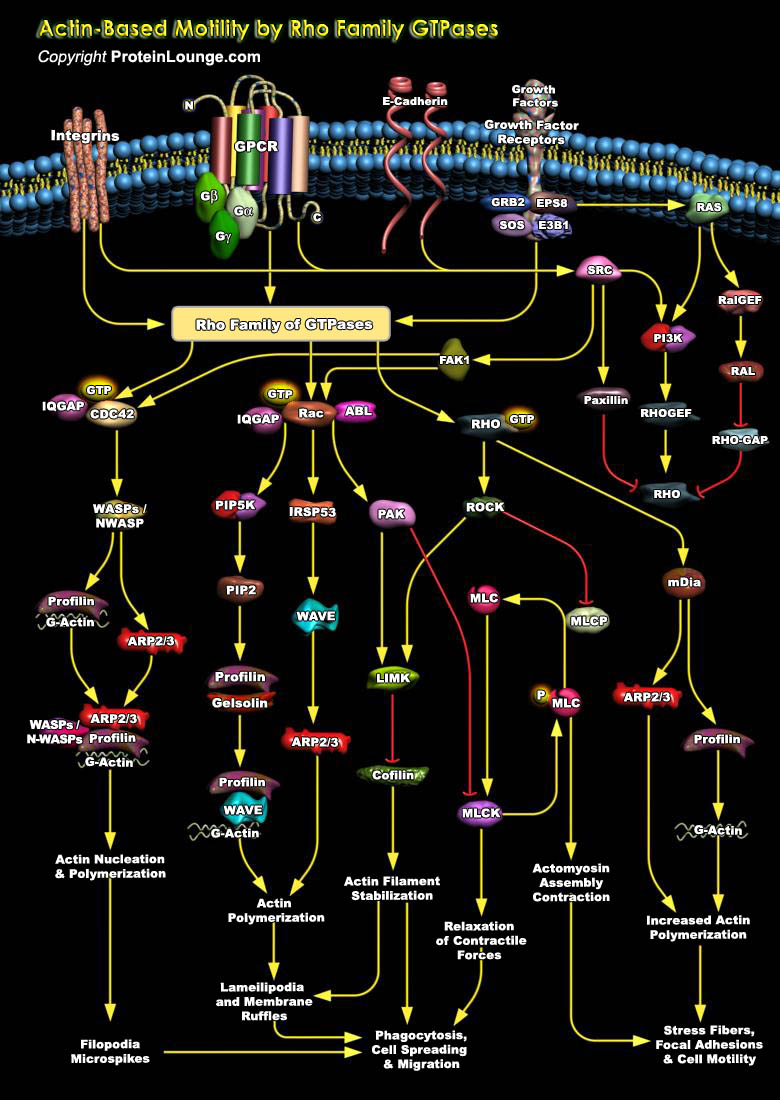
In response to a variety of extracellular stimuli, actin filament assembly at the leading edge of motile cells causes protrusion during cell crawling and chemotaxis, nerve growth and cell spreading. The actin filament network immediately under the plasma membrane in regions of rapid cellular protrusion consists of short, branched filaments while those deeper in the cortex, as well as at focal adhesions, stress fibers and in microvilli, are much longer and rarely branched (Ref.1). The dynamic organization of the actin cytoskeleton provides the force for cell motility and is regulated by small GTPases of the Rho family, in particular Rac1, RhoA and CDC42. The microtubule cytoskeleton is also polarized in a migrating cell, and in addition to organizing the actin[..]
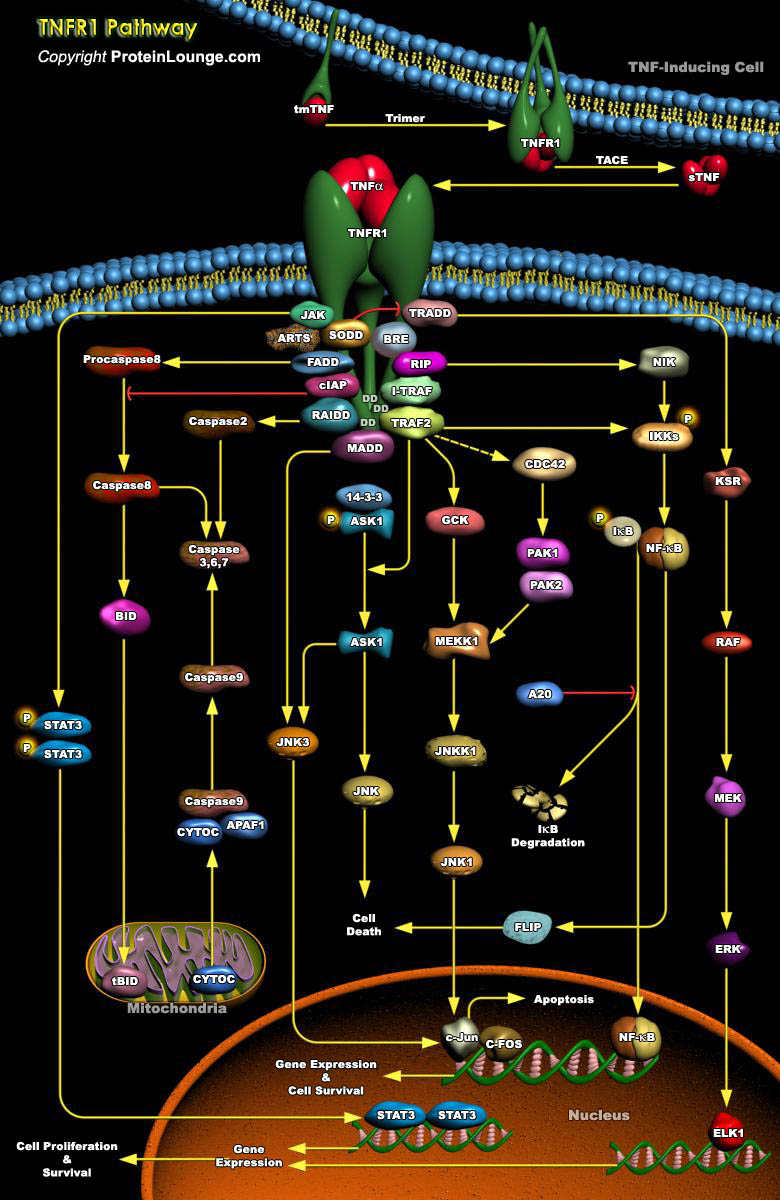
Tumor necrosis factor (TNF) is a pro-inflammatory cytokine with the capacity to induce apoptosis. It is enriched in the tumor microenvironment, promotes tumor growth and subverts innate immune responses to cancer cells. TNF is the best studied member of the TNF superfamily. TNF-alpha can bind to two related receptors, TNF receptors 1 and 2 (TNFR1 and TNFR2), which are also used by other, similar ligands. By binding to TNFR1 and TNFR2, TNF activates distinct signaling pathways important for cell proliferation, cell death and immune responses (Ref.1 and 2). TNFR1 is constitutively expressed in most cell types (Ref.3).The default effect of TNF stimulation is to activate the nuclear factor-kappaB (NF-kappaB) pathway and mediate inflammation. TNFR1 mediates the cytotoxic[..]
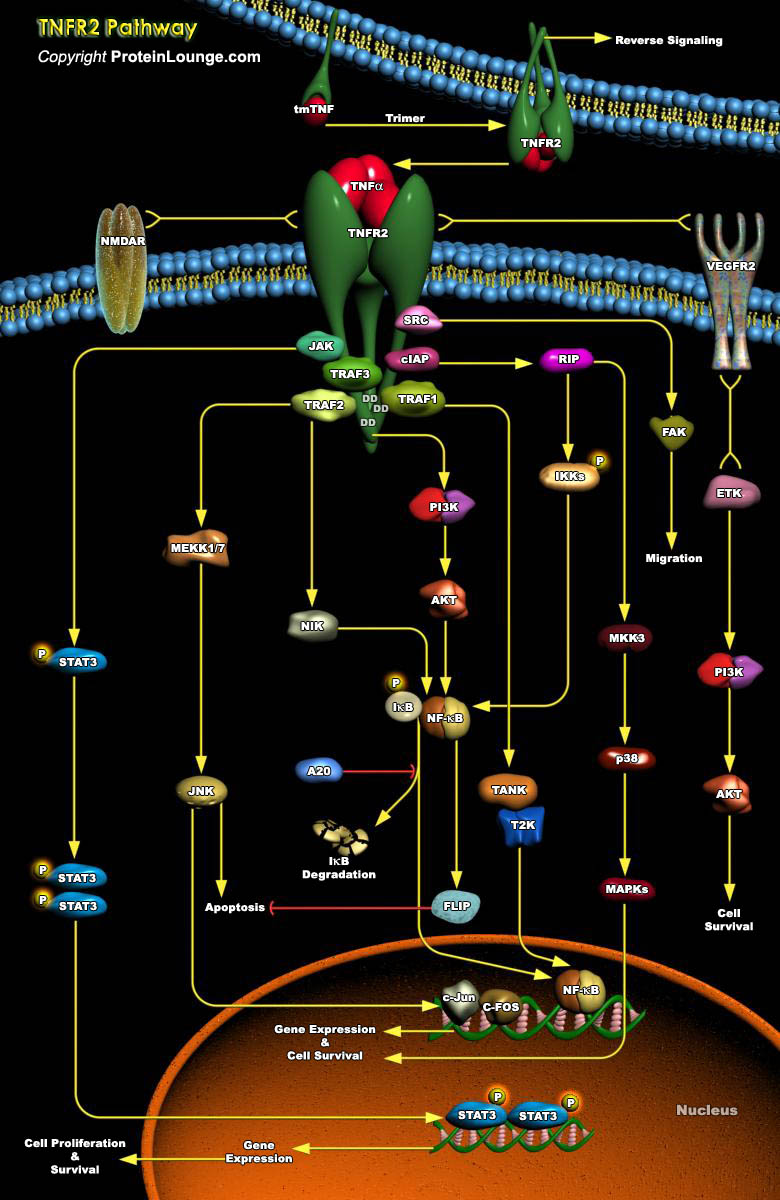
Tumor necrosis factor (TNF) is a pro-inflammatory cytokine with the capacity to induce apoptosis. It is enriched in the tumor microenvironment, promotes tumor growth and subverts innate immune responses to cancer cells. TNF is the best studied member of the TNF superfamily. TNF-alpha can bind to two related receptors, TNF receptors 1 and 2 (TNFR1 and TNFR2), which are also used by other, similar ligands. By binding to TNFR1 and TNFR2, TNF activates distinct signaling pathways important for cell proliferation, cell death and immune responses (Ref.1 and 2). TNFR2 is typically restricted to certain subpopulations of immune cells such as CD4+ or CD8+ T cells and a few other cell types such as oligodendrocytes and endothelial cells (Ref.3).TNFR2 signaling has significant[..]
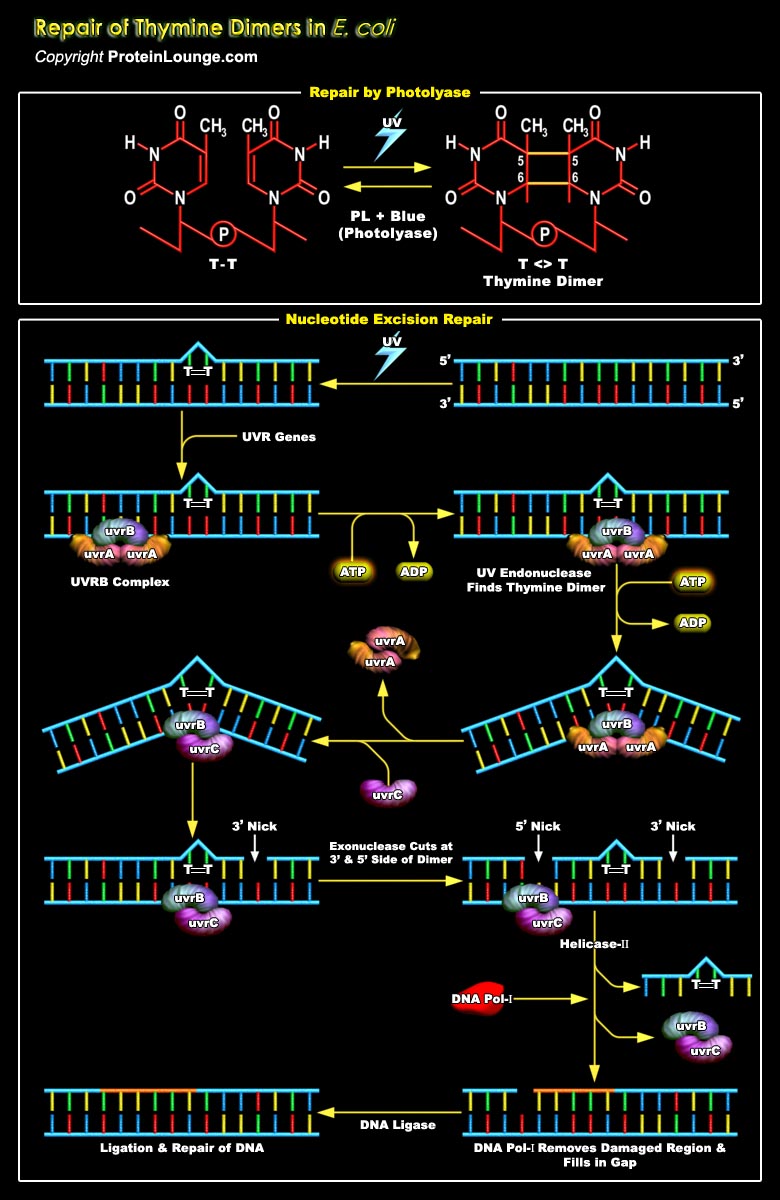
UV radiation induces two of the most abundant mutagenic and cytotoxic DNA lesions such as CPD (Cyclobutane-Pyrimidine Dimers) or 6-4PPs (6-4 Pyrimidine Pyrimidone). The most common covalently linked adjoining pyrimidines are TT(Thymine dimers), T-C (Thymine-Cytosine dimers) and C-C (Cytosine-Cytosine dimers). T-T dimers cause kinks in the DNA strand that prevent both replication and transcription of that part of the DNA. Because they block DNA replication (and therefore prevent cells from reproducing), T-T dimers and other forms of UV damage cannot be inherited, and thus do not constitute mutations. Such kinds of DNA damage are known as premutational lesions because they prevent both transcription and replication of the genes in which they are present and[..]
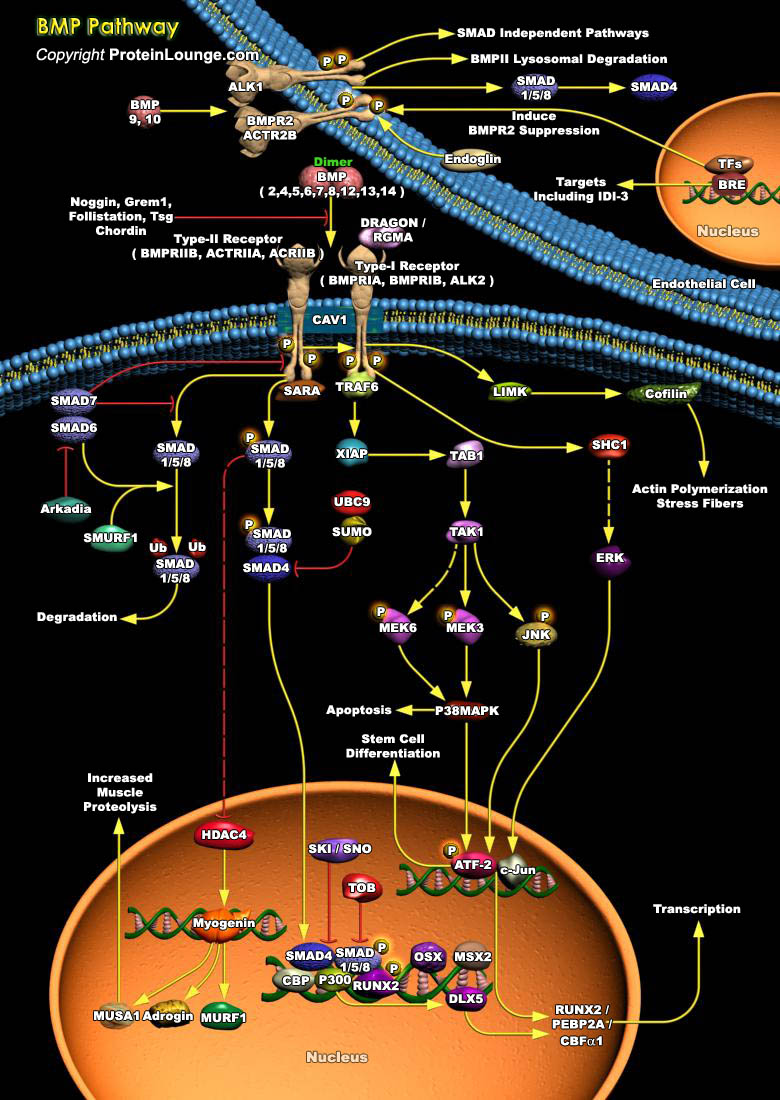
BMPs (Bone morphogenetic proteins) are the members of the transforming growth factor-beta superfamily of secreted signaling molecules [Ref.1]. Transduction of BMP signal involves two types of transmembrane serine/threonine kinase receptors: type I and type II [Ref.1]. BMP2, BMP4, BMP5,BMP6, BMP7, BMP8, BMP9, BMP10, BMP12, BMP13 and BMP14 (Bone morphogenetic protein 2, 4, 5, 6 ,7, 8, 9, 10, 12, 13 and 14) can bind to three type I receptors: BMPR1A (Bone morphogenetic protein receptor, type IA), BMPR1B (Bone morphogenetic protein receptor, type IB) and ALK-2 (Activin A receptor, type I) and two type II receptor, BMPR2A (Bone morphogenetic protein receptor type IIA) and ACTRIIA [Ref.1]. Various antagonists such as, Noggin, Tsg (twisted gastrulation), GREM1, Follistatin[..]
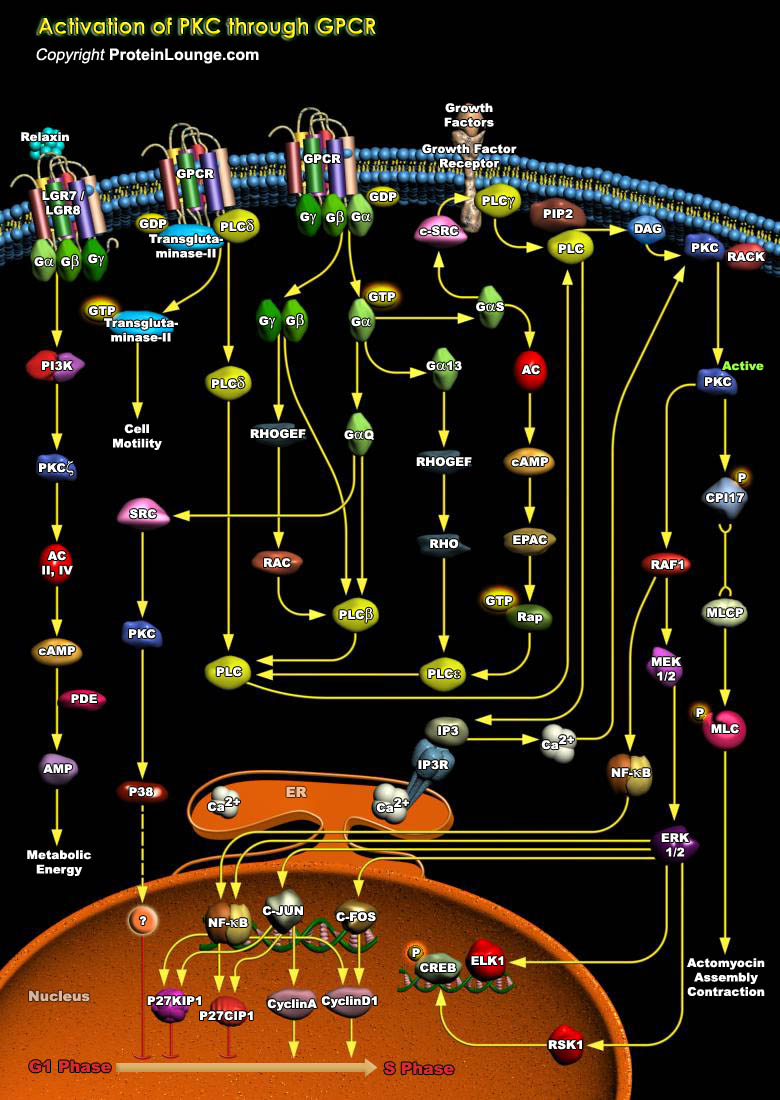
PKC (Protein Kinase-C) is a cyclic nucleotide-independent enzyme that phosphorylates serine and threonine residues in many target proteins. PKC plays a pivotal role in mediating cellular responses to extracellular stimuli involved in proliferation, differentiation, apoptosis, and exocytotic release in a number of non-neuronal systems such as Islet cells, Chromaffin cells and Paramecium. PKC has also been implicated in phosphorylation of several neuronal proteins, which are thought to regulate neurotransmitter release and establish long-term potentiation in memory formation. PKC is not a single enzyme but a family of serine/threonine kinases. At least eleven closely related PKC isozymes have been reported that differ in their structure, biochemical properties, tissue[..]
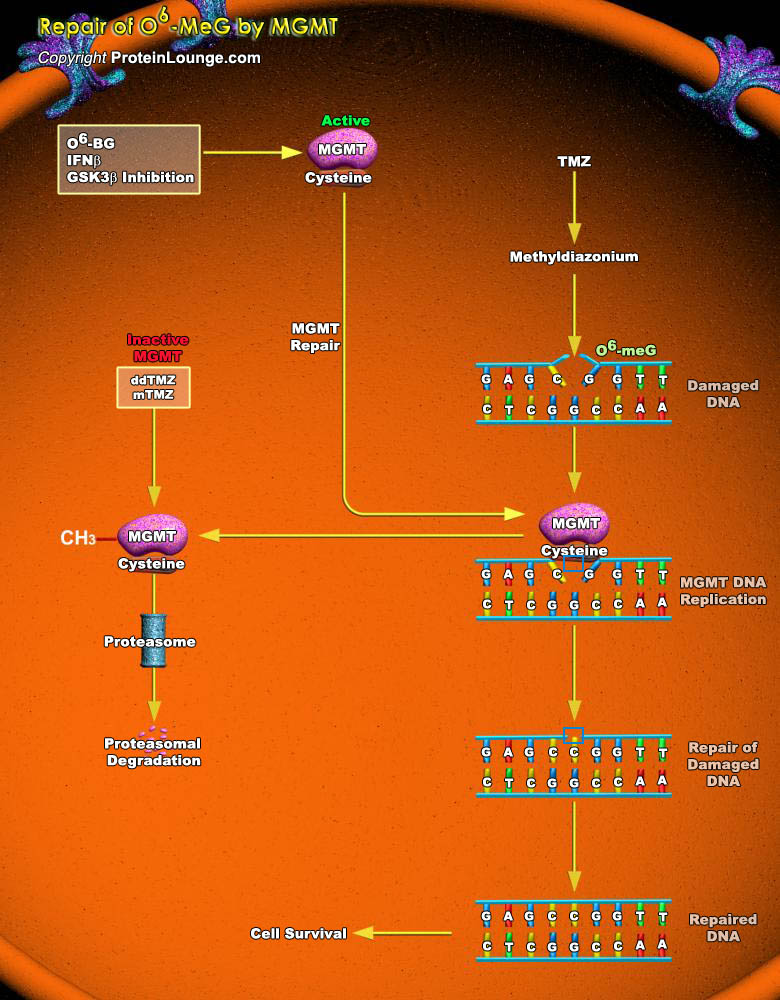
Alkylating agents are compounds that cause cytotoxic DNA damage as well as collateral mutagenic damage. They work by adding an alkyl group to the guanine base of the DNA molecule and cause breakage of DNA strands. Methylation at the guanine O6 position forms the greatest promutagenic and lethal toxic DNA lesion. O(6)-methylguanine (O6-meG) is formed in DNA by alkylation of the oxygen atom of guanine, most often by N-nitroso compounds (NOC) and sometimes due to methylation by other compounds such as endogenous S-adenosyl methionine. Several repair pathways like direct DNA damage reversal, base excision repair (BER) and mismatch repair (MMR), respond to alkylation damage to defend against alkylation-induced cell death or mutation. Direct reversal repair eliminates[..]

Development of a proper immune system requires the selection of lymphocytes expressing a useful repertoire of antigen receptors that can respond to foreign or dangerous antigens but not to self. For T-Cells developing in the thymus, these selection processes include both positive and negative selection of immature CD4 and CD8 cells, helping shape the mature T-Cell repertoire. These processes are regulated in large part through the interactions between the TCR (T-Cell Antigen Receptor) expressed on a given thymocyte and peptides presented in the context of either Class-II or Class-I MHC molecules. In T-Cells, at least three Tec Kinases are expressed: Tec, RLK (Resting Lymphocyte Kinase)/TXK and ITK (Inducible T-Cell Kinase), which have expression primarily restricted to[..]
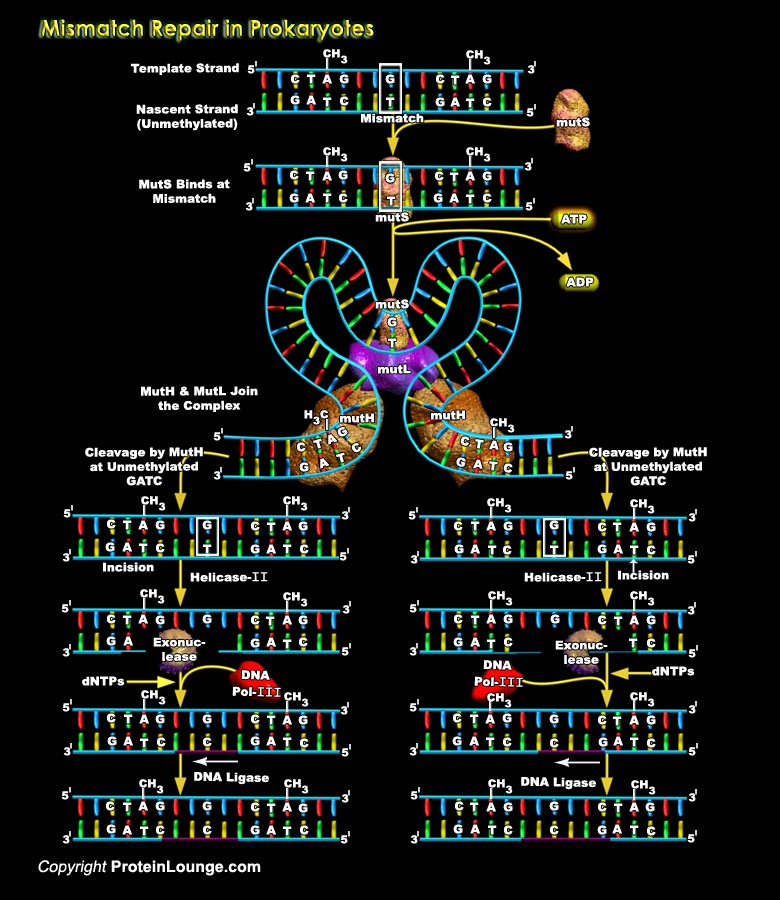
The integrity of genetic information depends on the fidelity of DNA replication and on the efficiency of several different DNA repair processes. Among many types of DNA repair, the general MMR (DNA Mismatch Repair) pathway is responsible for correcting base substitution mismatches which is generated during DNA replication in organisms from bacteria to mammals. The MMR system improves the fidelity of DNA synthesis by 100-1000 fold. The MMR also corrects IDLs (Insertion-Deletion Loops) which may occur during replication and recombination of DNA. MMR also able to correct DNA damages caused by internal or external sources. Inactivation or deterioration of this pathway has been linked to a variety of cancers, most notably Hereditary Non-Polyposis Colorectal Cancer. MMR can[..]

